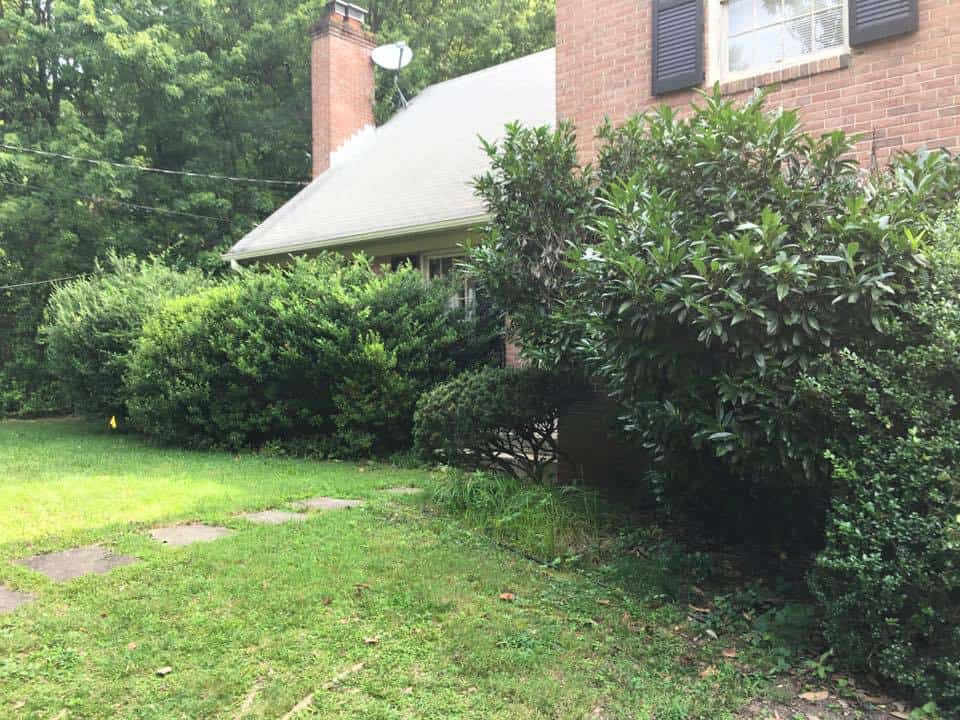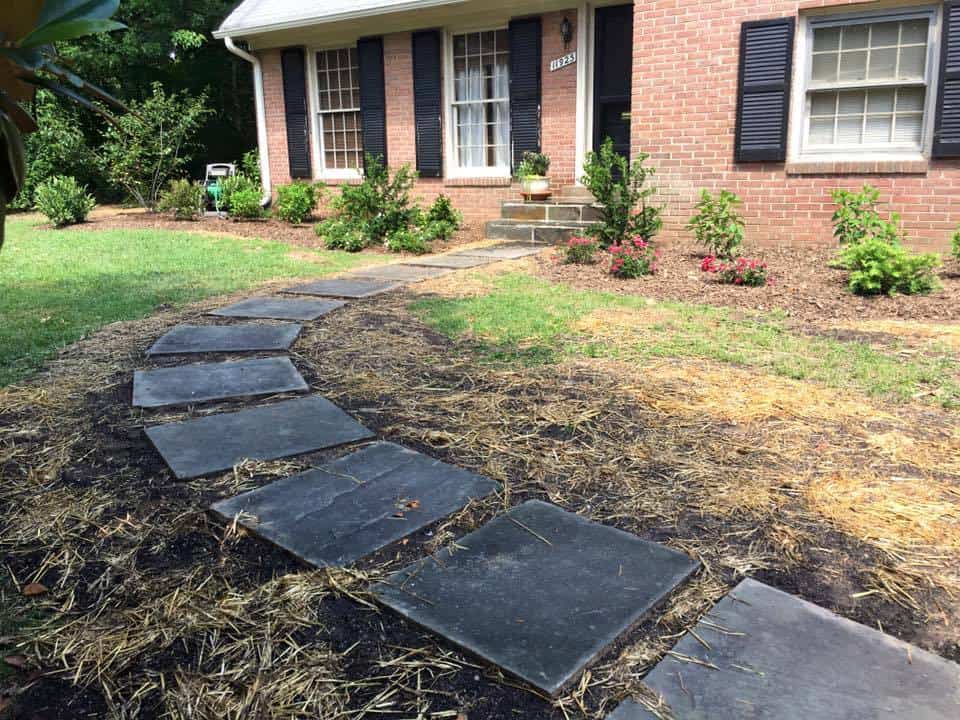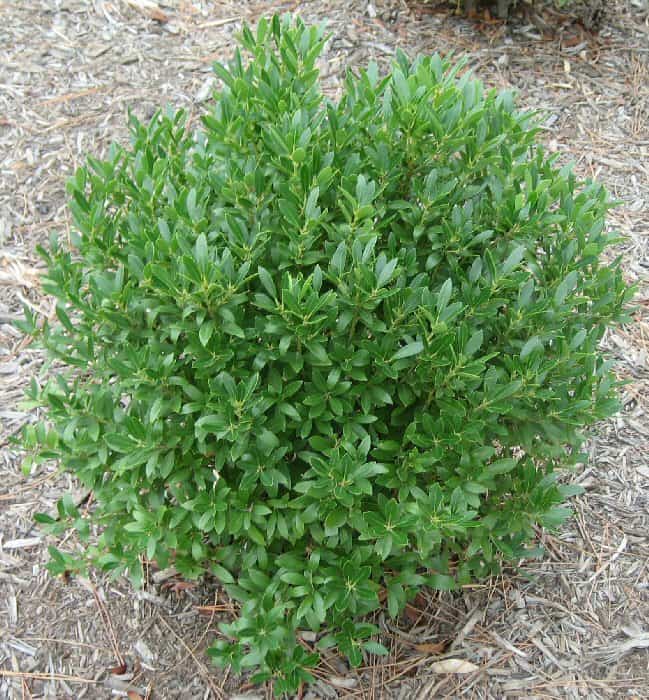Our Top 6 Replacements for Your Overgrown Shrubs

Replacing Your Overgrown Shrubs
What can I use to replace my existing, overgrown shrubs? People don’t often know what they can do to update their existing landscape to make it attractive and low maintenance. Yew, Japanese holly, azaleas, and barberry are popular landscaping choices, but are known to get too big for their space and just don’t look attractive. We’ve compiled a listed of our top 6 picks for beautiful native shrubs that will update your landscape.
The first step is to completely cut down the shrub to the ground. If it is small enough, you can dig out the roots yourself, or if it’s to big, call a stump grinder. When placing your new shrub, make sure to read the label to see how big it gets. You don’t want to place it too close to the wall, or you’ll be constantly cutting it back. Don’t place them too close together either. Make sure to use lots of compost while planting and water them daily!
Always read about the plant that you are buying! Just because you like the way it looks doesn’t mean it will thrive in your yard. Check to make sure that it will get the correct amount of sun, and that you have the right soil type. Some plants prefer well drained soil, some can tolerate clay. If you want a shrub that wont grow taller than your windows, make sure to take measurements ahead of time, unless you want to frequently cut it back.
If you’re looking for some native shrubs that will make great replacements for your outdated landscape, check out our list below:

Taking out all those dark shrubs really made a difference. The new landscape design has a nice combination of evergreen foundation shrubs and flowering shrubs to add color at all times of year. This new landscape has red drift rose, limelight hydrangea, fernspray falsecypress, serviceberry, clethra and Japanese prostrate yew in the front yard.
Clethra alnifolia
Clethra grows to be about 8 feet tall and tolerates deer, clay soil, wet soil, and heavy shade. It is a great pollinator and can be used for rain gardens or hedges. It’s bright green leaves turn yellow in the fall. The hummingbird varieties of the sweet pepperbush are shorter, growing about 4 feet tall.
Henry’s Garnet Sweetspire- Itea virginica
Henry’s garnet sweetspire is a great shrub for most soil conditions. It can tolerate wet and clay soils, as well as some shade, and is good for erosion control. In the fall its green leaves turn to varying shades of red. It is also a great shrub for rain gardens! Grows up to 4 feet tall and 6 feet wide.
Oakleaf hydrangea ‘Ruby Slipper’- Hydrangea quercifolia
The oakleaf variety of hydrangeas are a nice native option for fans of their showy flowers. The ‘Ruby Slipper’ flower is white with soft pink tones and only grows up to 4 feet tall. Instead of cutting off the dead flowers, leave them on to create winter interest. They lose their color, but they hold their shape! Grows up to 8 feet tall and wide.
Evergreens
Leucothoe axillaris
Leucothoe is a great shrub for bringing in color to your landscape. Its waxy leaves range from dark green to deep red and its clustered flowers are small and bell shaped. It is great for partly shaded landscapes and attracts pollinators. Grows up to 4 feet wide and 5 feet tall.
Inkberry Holly
Inkberry hollies are a great replacement for the typical boxwood. It is great for yards with deer and rabbit problems, and will tolerate wet soil. Minimal maintenance is required unless you want to keep it as a hedge. There are separate male and female plants, so if you want them to grow berries, make sure to get a pollinator! Grows up to 8 feet tall and wide. The Shamrock variety only grows up to 4 feet.
‘Grey Owl’ Juniper- Juniperus virginiana
The Grey owl variety of juniper is a great, low growing shrubs that has many uses. It can tolerate drought, deer, dry soil, shallow-rocky soil, and air pollution, and it is also great for erosion control. It has an attractive blue-green leaf and red bark. For anyone who is a fan of gin, make sure to get both a male and female variety so that the female with produce cones! Grows up to 3 feet tall and 6 feet wide.
Of course, any shrub that you let grow wild is going to keep growing! Make sure to give them the proper care and pruning they need to stay the size that you want. Choosing smaller sized starters will take longer to fill in, but also take longer to become overgrown!
Call us now for a free estimate to get your old shrubs removed and replaced with some of these great options!
410-461-2535
laurensgardens@gmail.com
Click Here to Get Started With an Estimate!






